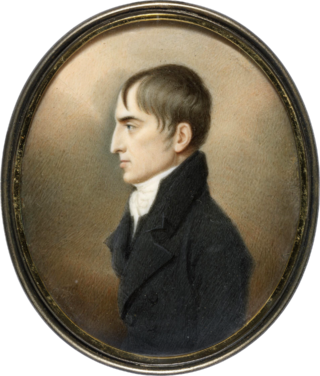
Robert Emmet was an Irish Republican, orator and rebel leader. Following the suppression of the United Irish uprising in 1798, he sought to organise a renewed attempt to overthrow the British Crown and Protestant Ascendancy in Ireland, and to establish a nationally representative government. Emmet entertained, but ultimately abandoned, hopes of immediate French assistance and of coordination with radical militants in Great Britain. In Ireland, many of the surviving veterans of '98 hesitated to lend their support, and his rising in Dublin in 1803 proved abortive.

Golden Gate Park is an urban park between the Richmond and Sunset districts of San Francisco, California, United States. It is the largest park in the city, containing 1,017 acres (412 ha), and the third-most visited urban park in the United States, with an estimated 24 million visitors annually.

Augustus Saint-Gaudens was an Irish and American sculptor of the Beaux-Arts generation who embodied the ideals of the American Renaissance. Saint-Gaudens was born in Dublin to an Irish-French family, and raised in New York City. He traveled to Europe for further training and artistic study. After he returned to New York City, he achieved major critical success for his monuments commemorating heroes of the American Civil War, many of which still stand. Saint-Gaudens created works such as the Robert Gould Shaw Memorial on Boston Common, Abraham Lincoln: The Man, and grand equestrian monuments to Civil War generals: General John Logan Memorial in Chicago's Grant Park and William Tecumseh Sherman at the corner of New York's Central Park. In addition, he created the popular historicist representation of The Puritan.

Adolph Alexander Weinman was a German-born American sculptor and architectural sculptor.

General Jose Gervasio Artigas is a bronze statue, in Washington, DC, capital of the United States, at the intersection of Constitution Avenue and Virginia Avenue, at 18th Street. It is one of a set called the Statues of the Liberators. José Artigas was a 19th-century general, sometimes called "the father of Uruguayan independence", "Protector de los Pueblos Libres" or "Jefe de los Orientales".
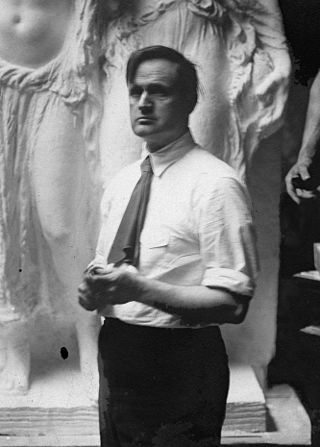
James Earle Fraser was an American sculptor during the first half of the 20th century. His work is integral to many of Washington, D.C.'s most iconic structures.

There are many outdoor sculptures in Washington, D.C. In addition to the capital's most famous monuments and memorials, many figures recognized as national heroes have been posthumously awarded with his or her own statue in a park or public square. Some figures appear on several statues: Abraham Lincoln, for example, has at least three likenesses, including those at the Lincoln Memorial, in Lincoln Park, and the old Superior Court of the District of Columbia. A number of international figures, such as Mohandas Gandhi, have also been immortalized with statues. The Statue of Freedom is a 19½-foot tall allegorical statue that rests atop the United States Capitol dome.

Sarah Curran was the youngest daughter of John Philpot Curran, an Irish barrister celebrated for his defence of United Irishmen, and his wife Sarah Curran. She was the great love of the Irish patriot Robert Emmet, executed for treason in 1803.

Henry Daniel Cogswell was an American dentist and a crusader in the temperance movement. Cogswell and his wife Caroline also founded Cogswell College in San Jose, California. Another campus in Everett, Washington was later dedicated in his honor.

The Temperance Fountain is a fountain and statue located in Washington, D.C., donated to the city in 1882 by Henry D. Cogswell, a dentist from San Francisco, California, who was a crusader in the temperance movement. This fountain was one of a series of temperance fountains he designed and commissioned in a belief that easy access to cool drinking water would keep people from consuming alcoholic beverages.

Beniamino "Bene" Bufano was an Italian American sculptor, best known for his large-scale monuments representing peace and his modernist work often featured smoothly rounded animals and relatively simple shapes. He worked in ceramics, stone, stainless steel, and mosaic, and sometimes combined two or more of these media, and some of his works are cast stone replicas. He had a variety of names used and sometimes went by the name Benvenuto Bufano because he admired Benvenuto Cellini. His youthful nickname was "Bene", which was often anglicized into "Benny". He lived in northern California for much of his career.

Barry Flanagan OBE RA was an Irish-Welsh sculptor. He is best known for his bronze statues of hares and other animals.
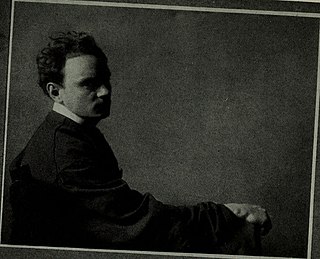
Leo Lentelli was an Italian sculptor who immigrated to the United States. During his 52 years in the United States he created works throughout the country, notably in New York and San Francisco. He also taught sculpture.

The Irish rebellion of 1803 was an attempt by Irish republicans to seize the seat of the British government in Ireland, Dublin Castle, and trigger a nationwide insurrection. Renewing the struggle of 1798, they were organised under a reconstituted United Irish directorate. Hopes of French aid, of a diversionary rising by radical militants in England, and of Presbyterians in the north-east rallying once more to the cause of a republic were disappointed. The rising in Dublin misfired, and after a series of street skirmishes, the rebels dispersed. Their principal leader, Robert Emmet, was executed; others went into exile.
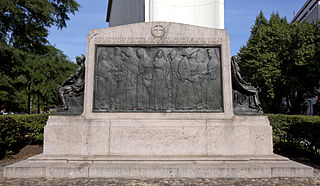
Nuns of the Battlefield is a public artwork made in 1924 by Irish artist Jerome Connor, located at the intersection of Rhode Island Avenue NW, M Street, and Connecticut Avenue NW, in Washington, D.C., United States. A tribute to the more than 600 nuns who nursed soldiers of both the Union Army and the Confederate States Army during the American Civil War, it is one of two monuments in the District that mark women's roles in the conflict. It is a contributing monument to the Civil War Monuments in Washington, D.C., listed on the National Register of Historic Places. In 1993, it was surveyed for the Smithsonian Institution's Save Outdoor Sculpture! program.

The Dupont Circle Fountain, formally known as the Rear Admiral Samuel Francis Dupont Memorial Fountain, is a fountain located in the center of Dupont Circle in Washington, D.C. It honors Rear Admiral Samuel Francis Du Pont, a prominent American naval officer and member of the Du Pont family. The fountain replaced a statue of Du Pont that was installed in 1884. Designed by Henry Bacon and sculpted by Daniel Chester French, the fountain was dedicated in 1921. Prominent guests at the dedication ceremony included First Lady Florence Harding, Secretary of War John W. Weeks and Secretary of the Navy Edwin Denby.

Bishop John Carroll is a statue by the sculptor Jerome Connor commemorating Archbishop John Carroll, the founder of Georgetown University and the first Catholic bishop in the United States. Located in front of Healy Hall, on university's campus in the Georgetown neighborhood of Washington, D.C., the statue consists of a bronze sculpture of Carroll on top of a granite pedestal.
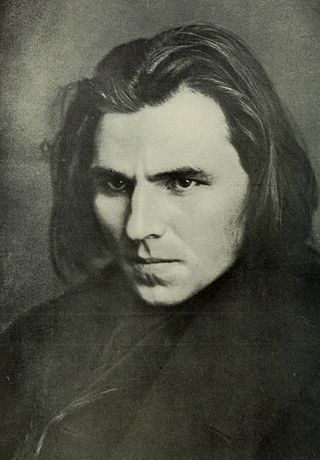
Jerome Connor was an Irish sculptor.

The Embassy of the Republic of Indonesia in Washington, D.C. is the diplomatic mission of the Republic of Indonesia to the United States. It is located at 2020 Massachusetts Avenue, Northwest, Washington, D.C., in the Embassy Row neighborhood.

People of Irish descent form a distinct ethnic group in Washington, D.C., and have had a presence in the region since the pre-American Revolution period.



















